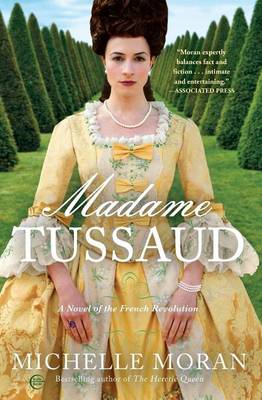Reviewed by Amber (The Literary Phoenix) on
While I would have been interested in a story more uniquely about Marie herself, using her as a vehicle to discuss both sides of the French Revolution was clever. When reading historical fiction, especially ones around the flights of war, it’s typical to take one side or another. As an historian, I’ve been encouraged to try and set aside bias – and guys, that is so hard. We impress not only personal opinions on topics, but also modern intelligence and morals. In choosing Marie Tussaud to talk about the French Revolution, Michelle Moran created a world with a character who had torn alliances – liberty, or the royal family? In this narrative, Marie saw the French ruling family as people, a far cry from the bloodthirsty mobs of the poor, or of the National Convention.
I will say, I don’t know a whole lot about the French Revolution. I don’t know a lot about Marie Tussaud. But I appreciate that Michelle Moran follows up the story admitting the things she changed for the narrative, because it adds a level of speculative accuracy to the rest of the fiction. Per Moran, there’s no definitive word on whether Marie was a Royalist or not, because seeing this story from a figure who tried to play both sides, finding both sides wrong and both sides right… that was interesting. I really liked that.
Unlike most historical fiction, Madame Tussaud does not linger on romantic conquests. Rather, Marie spurns them (kindly). For me, in this genre, that was SO refreshing. It frustrates me in any book when romance overrides the plot, and it doubly frustrates me in historical fiction when imaginary romances are created to amuse the reader. Historically significant people are more than their love stories, and if they don’t have one… don’t make one? Or do, whatever, but that book is not for me. I know a lot of people come to historical fiction looking for a love story, so I do want to warn potential readers that the love story is very minor… to practically non-existent.
The only thing I would have liked to see more of in this novel was character development. I feel that happens often in the genre as well – characters are allowed to let their reputations precede them. Marie’s character was developed well enough, but the people in her inner circle were shallow or unexplored. I would have loved to see more of the others.
There’s also not a lot of time spent in the museum or working with wax… and the time we spend with Marie at her craft feels rushed and repetitive. Obviously, when there’s a war going on, there are things more important than her exhibition. It would have been interesting to see how things grew after the end of the Revolution, but there is a lot of time and material already covered in this book… so I get it. I could have read a duology, though!
While I liked Madame Tussaud, I can see how the book may not be for everyone. It’s an interesting perspective for fans of historical fiction who like to see less biased takes on major world events, and lower levels of romance. I enjoyed it! And I hope some of you would as well!
Reading updates
- Started reading
- 4 January, 2020: Finished reading
- 4 January, 2020: Reviewed
